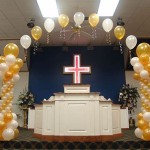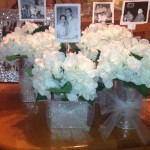Creating a Phantom of the Opera Inspired Room Decor
Phantom of the Opera, a timeless tale of tragic romance, mystery, and artistic genius, has captivated audiences for generations. The visual opulence and dramatic atmosphere of the story lend themselves beautifully to interior design, offering a rich palette of inspiration for creating a themed room. Designing a Phantom-inspired room requires careful consideration of key elements from the narrative, including color schemes, architectural details, and symbolic motifs. The goal is to evoke the spirit of the Paris Opera House and the phantom's shadowy world while maintaining a functional and aesthetically pleasing space.
The success of a Phantom of the Opera room decor hinges on striking a balance between theatrical extravagance and livable comfort. An overly literal interpretation can result in a space that feels more like a stage set than a personal haven. Therefore, adaptation and thoughtful editing are essential. This article will explore key design principles that can be employed to create a space that whispers of the Phantom's world while remaining elegant and functional.
Establishing the Color Palette: Darkness, Drama, and Opulence
Color plays a pivotal role in establishing the mood of a room, and a Phantom of the Opera theme is no exception. The color palette should reflect the duality of the story: the grandeur of the Opera Populaire contrasted with the shadowy depths of the Phantom's lair. Deep, rich colors are paramount, serving as the foundation for a sophisticated and dramatic ambiance.
Burgundy, crimson, and deep red hues are evocative of the velvet curtains, opulent seating, and passionate emotions associated with the Opera House. These colors can be used for accent walls, draperies, or upholstery. Consider incorporating textures like velvet or damask to further enhance the luxurious feel. In contrast to the vibrant reds, using blacks, charcoal grays, and deep purples help establish the mystery and brooding atmosphere of the Phantom's subterranean world. These darker shades can be incorporated through furniture, rugs, and darker paint choices for architectural details or accent walls.
Golds and silvers, whether antique or bright, can be used as accents to add an opulent touch. These metallic hues can be featured in decorative elements like picture frames, mirrors, candle holders, and light fixtures. The interplay of light and shadow is crucial. Carefully selected lighting fixtures, such as chandeliers or sconces with dimmable bulbs, will help create the desired ambiance. Consider using amber-toned bulbs to cast a warm, romantic glow.
The color balance is critical. Too much darkness can make the room feel oppressive, while an excess of bright colors can diminish the dramatic impact. Strive for a harmonious blend of light and dark, opulent and subdued, to create a space that is both visually stunning and comfortable to inhabit. An example of balanced usage would be primarily utilizing dark charcoal or deep burgundy walls, then adding accents of gold through mirrors, lamps, or picture frames. Perhaps incorporate a rich velvet chaise lounge in a deep red to introduce textural luxury and color contrast.
Incorporating Key Architectural Details and Motifs
Beyond color, architectural details and symbolic motifs are essential for capturing the essence of the Phantom of the Opera. These elements should be thoughtfully integrated to enhance the thematic consistency of the room without overwhelming the space.
Arches and curves are prevalent in the architecture of the Paris Opera House. Consider incorporating arched doorways, curved moldings, or even decorative arches on walls to evoke this architectural style. If structural changes are not feasible, using arched mirrors or curved furniture can achieve a similar effect. Mirrors, in general, are a key motif in Phantom lore, representing both vanity and illusion. Strategically placed mirrors can enhance the feeling of grandeur and create a sense of depth within the room.
The iconic chandelier is perhaps the most recognizable symbol of the Phantom of the Opera. A statement chandelier, preferably one with crystal accents or a dramatic design, can serve as a focal point for the room. Consider a chandelier that can be dimmed to control the intensity of the light and create different moods. Furthermore, incorporate other lighting fixtures such as sconces or table lamps with decorative shades to enhance the overall illumination and add to the ambiance. Using lamps with fringe, beaded details, or dark shades can add to the overall theatrical feel of the room.
Masks are another powerful symbol associated with the Phantom. Displaying decorative masks, whether antique or contemporary, can add a touch of mystery and intrigue to the room. These masks can be displayed on walls, shelves, or even incorporated into artwork. Consider using masks with intricate details, such as feathers, beads, or metallic accents, to enhance their visual appeal.
Music is central to the story. Incorporating musical elements can reinforce the theme. Sheet music, vintage instruments, or artwork depicting musical scenes can be used as decorative accents. Consider framing antique sheet music or displaying a vintage violin or cello to add a touch of authenticity and elegance. Alternatively, a record player playing classical music or selections from the Phantom of the Opera soundtrack can further enhance the atmosphere.
Draperies are another important element. Heavy, luxurious fabrics like velvet or damask can be used to create dramatic window treatments. Consider using tiebacks or tassels to add to the overall opulent feel. Additionally, consider using valances or cornices to frame the windows and enhance the architectural details of the room.
Furniture and Furnishings: Comfort, Elegance, and Theatrical Flair
The selection of furniture and furnishings is crucial for creating a room that is both visually appealing and comfortable. The pieces should reflect the elegance and theatrical flair of the Phantom of the Opera while also serving their practical purpose. The goal is to create a space that is both inviting and evocative of the story's atmosphere.
Upholstered furniture pieces, such as sofas, chairs, and ottomans, should be chosen in luxurious fabrics like velvet, damask, or silk. These fabrics add to the overall opulent feel of the room. Consider using furniture with ornate details, such as carved legs, tufted backs, or nailhead trim, to enhance the visual appeal. A chaise lounge upholstered in a rich-colored velvet can serve as a focal point and add a touch of drama to the room.
Antique or vintage furniture pieces can add a sense of authenticity and history to the room. Consider incorporating pieces like a Victorian-era writing desk, a gilded mirror, or a vintage chest of drawers. These pieces can be found at antique stores, flea markets, or online auctions. When selecting antique or vintage pieces, consider their condition and whether they need to be restored or refurbished.
Rugs are an important element for grounding the space and adding to the overall comfort and visual appeal. Consider using oriental rugs, Persian rugs, or rugs with intricate patterns to enhance the luxurious feel of the room. The color of the rug should complement the overall color palette of the room. A rug with a dark background and intricate patterns can add a sense of depth and dimension to the space.
Decorative accessories are essential for adding the finishing touches to the room. Consider using candles, candelabras, and ornate picture frames to enhance the overall ambiance. Decorative boxes, vases, and sculptures can also be used to add to the visual interest of the room. When selecting decorative accessories, consider their scale and proportion in relation to the other elements in the room. The accessories should complement the overall theme of the room and not overwhelm the space.
Artwork is another important element. Consider using paintings, prints, or photographs that reflect the themes and motifs of the Phantom of the Opera. Portraits, landscapes, and scenes from the opera can be used to add to the visual interest of the room. Consider using ornate frames to enhance the visual appeal of the artwork. Alternatively, consider framing vintage playbills or posters from productions of the Phantom of the Opera.
Textiles such as throw pillows and blankets can be used to add to the comfort and visual appeal of the room. Consider using pillows and blankets in luxurious fabrics like velvet, silk, or faux fur. These textiles can be used to add color, texture, and pattern to the room. Consider using pillows with ornate details, such as tassels, beads, or embroidery, to enhance the visual appeal. A throw blanket draped over a chair or sofa can add a touch of coziness and warmth to the room.
In summary, creating a Phantom of the Opera-inspired room decor requires careful attention to detail and a thoughtful integration of key elements from the story. By establishing a dramatic color palette, incorporating architectural details and symbolic motifs, and selecting furniture and furnishings that reflect the elegance and theatrical flair of the opera, it is possible to create a space that is both visually stunning and comfortable to inhabit.

Phantom Of The Opera Birthday Party Ideas Photo 2 20 Sweet 16 Masquerade Themes

Phantom Of The Opera Cocktail Party Ideas Photo 1 13 Masquerade Decorations Sweet 16 Theme

Pin On Decorating

Phantom Of The Opera Inspired Bedroom Inspirations New Room Home Decor

Phantom Of The Opera Prom Backdrops Decor

15 Phantom Of The Opera Theme Party Ideas

Phantom Of The Opera Birthday Party Ideas Photo 1 20 Catch My

Phantom Of The Opera Style Bedroom Gothic Home Decor House

Airbnb Unveils A One Night Stay In The Phantom Of Opera Theater Robb Report

The Phantom Of Opera 1925
Related Posts







